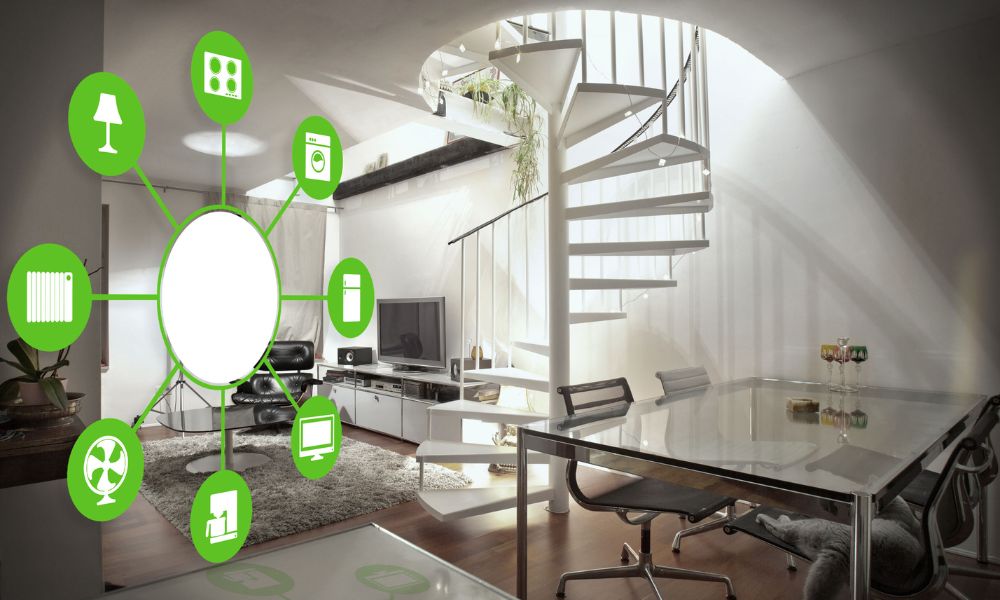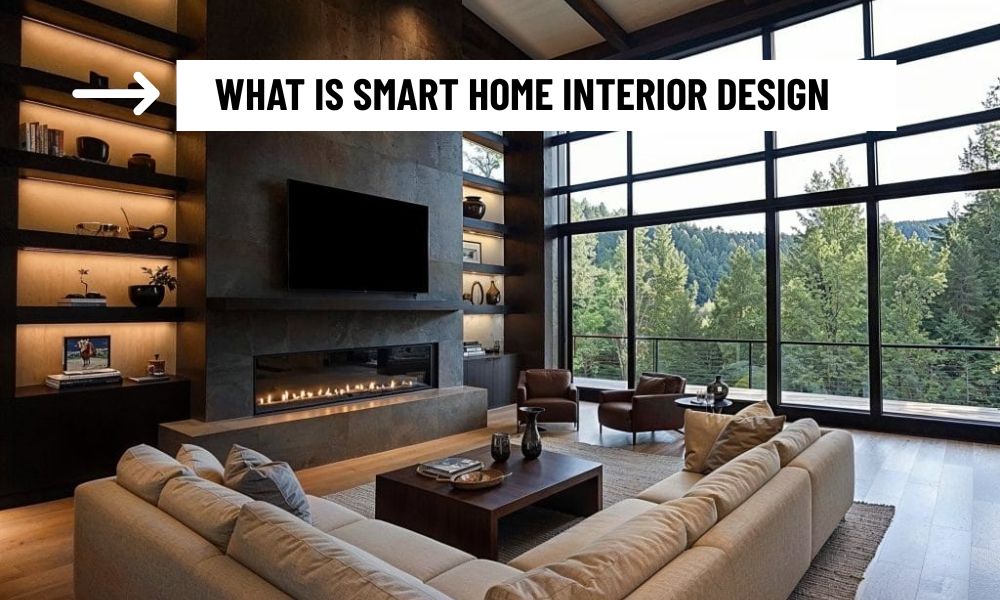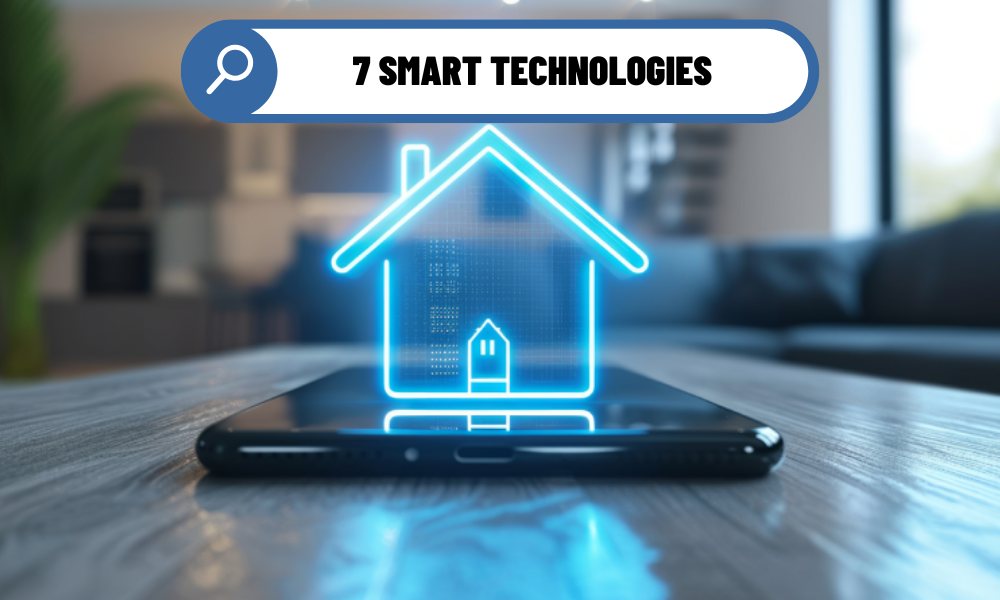What is smart home interior design? It’s the art of blending cutting-edge technology with thoughtful aesthetics to create living spaces that are intelligent, functional, and visually captivating. This innovative approach redefines how we interact with our homes, merging automation with style to elevate comfort and efficiency.
Contents
What Is Smart Home Interior Design?
Smart home interior design is the strategic integration of smart technology into the layout, furnishings, and decor of a home to enhance functionality, convenience, and visual harmony. Unlike traditional interior design, which focuses primarily on aesthetics and comfort, smart home interior design incorporates devices like automated lighting, climate control systems, and voice-activated assistants to create a responsive living environment. The goal is to craft spaces that adapt to the occupants’ needs while maintaining a cohesive and appealing aesthetic.

At its core, What is smart home interior design revolves around the seamless marriage of technology and design. It ensures that smart devices, such as motorized blinds or embedded sensors, blend naturally into the home’s aesthetic rather than appearing as afterthoughts. For instance, a smart thermostat might be mounted in a sleek, minimalist frame that complements the room’s decor, or hidden speakers might be integrated into walls for a clutter-free look. This approach prioritizes user experience, allowing residents to control their environment effortlessly through apps, voice commands, or automated routines.
The rise of smart home interior design reflects a growing demand for homes that are not only beautiful but also intuitive. With advancements in IoT (Internet of Things) technology, designers can now create spaces that anticipate needs—dimming lights for movie nights or adjusting temperatures before you arrive home. This design philosophy is accessible to all, from luxury homeowners to apartment dwellers, as affordable smart devices and modular systems become widely available. By understanding its structure, we can see how this design paradigm transforms living spaces.
Structure of Smart Home Interior Design
The structure of smart home interior design is built on three key pillars: technology integration, spatial planning, and user-centric functionality. These elements work together to create a cohesive and intelligent home environment.
The backbone of What is smart home interior design is the incorporation of smart devices into the home’s infrastructure. This includes lighting systems (e.g., Philips Hue), smart thermostats (e.g., Ecobee), security cameras, and voice assistants like Amazon Alexa or Google Home.
These devices are connected via a central hub or platform, such as Apple HomeKit or Samsung SmartThings, ensuring seamless communication. Designers must plan for wiring, Wi-Fi coverage, and device placement to avoid visual clutter. For example, recessed outlets or hidden conduits can conceal cables, preserving the room’s aesthetic.
Smart home interior design requires careful spatial planning to accommodate technology without compromising functionality or style. Designers consider how devices interact with the room’s layout. For instance, motion sensors for lighting should be placed in high-traffic areas, while smart mirrors might be integrated into bathrooms for both utility and elegance.
Furniture placement is also key—modular sofas with built-in charging ports or coffee tables with wireless charging pads enhance convenience without sacrificing space. This pillar ensures that technology enhances, rather than disrupts, the flow of the home.
The design prioritizes the occupant’s lifestyle. A family with young children might need automated safety features, like smart locks or outlet covers, while a professional working from home might prioritize a smart office with adjustable lighting and noise-canceling panels.
Designers use data from user preferences—gathered via apps or consultations—to tailor the system. Routines, such as “Good Morning” settings that open blinds and play music, are programmed to align with daily habits. This customization makes the home feel intuitive and personalized.

Role of Furniture in the Smart Home Experience
Furniture plays a pivotal role in What is smart home interior design, acting as both a functional element and a medium for technology integration. Unlike traditional furniture, smart furniture is designed to enhance connectivity, comfort, and efficiency, creating a dynamic living experience.
Modern furniture often incorporates smart features, such as beds with built-in sensors to track sleep patterns or desks with adjustable heights controlled via apps. For example, a smart sofa might include USB ports, wireless chargers, or even massage functions, all seamlessly integrated into its design. These pieces reduce the need for standalone devices, keeping the space uncluttered and cohesive.
Smart home furniture is often modular, allowing it to adapt to changing needs. A dining table might extend automatically for guests, or a bookshelf might rotate to reveal a hidden home office. This adaptability aligns with the fluid nature of smart homes, where spaces serve multiple purposes. In small apartments, multifunctional furniture—like ottomans with storage or foldable desks—maximizes space while supporting smart features.
Furniture can serve as an interface for smart systems. A coffee table with a touchscreen surface might control lighting or display weather updates, while a mirror in the hallway could double as a smart display for reminders. These interactive elements make technology accessible and intuitive, reducing reliance on smartphones or voice assistants.
So, in What is smart home interior design, furniture is not just decor but a bridge between technology and human experience. Designers select pieces that align with the home’s aesthetic—whether minimalist, industrial, or bohemian—while ensuring they enhance the smart ecosystem.
Aesthetic Factors in Smart Home Interior Design
Aesthetics are at the heart of What is smart home interior design, ensuring that technology enhances rather than overshadows the home’s visual appeal. Balancing form and function requires careful consideration of color, materials, and design coherence.
Aesthetic success lies in making technology invisible or complementary. Smart devices are often designed with sleek, minimalist finishes—think brushed metal thermostats or matte black speakers—that blend into modern decor. Designers use techniques like recessed lighting or built-in cabinetry to hide wires and devices, creating a clean look. For example, a smart speaker might be embedded in a wall panel, matching the room’s color scheme.
Materials play a crucial role in tying technology to aesthetics. Natural materials like wood or stone can soften the high-tech feel of smart devices, while glass and metal accentuate a futuristic vibe. In a Scandinavian-inspired smart home, light wood furniture paired with white smart bulbs creates a warm, cohesive aesthetic. Designers also opt for sustainable materials, like bamboo or recycled plastics, to align with eco-conscious trends in smart home design.
Smart technology allows for dynamic aesthetics through customizable lighting and decor. Smart bulbs can shift colors to match moods—soft blues for relaxation or vibrant reds for parties—while motorized curtains adjust to control natural light. These features let homeowners tailor the ambiance without physical changes, ensuring the design remains versatile and timeless.
A successful smart home interior maintains a unified style across all elements. Whether the aesthetic is mid-century modern or industrial, smart devices and furniture must align with the chosen theme. For instance, a retro-inspired home might use vintage-style smart switches with brass finishes, while a contemporary space might favor glossy, touch-sensitive panels.
What is smart home interior design? It’s a visionary approach that fuses technology, functionality, and aesthetics to craft living spaces that are intuitive and beautiful. To Dwelling Tech Trends, as technology evolves, smart home interior design will continue to redefine how we live, blending innovation with style for a future where homes truly understand us.


